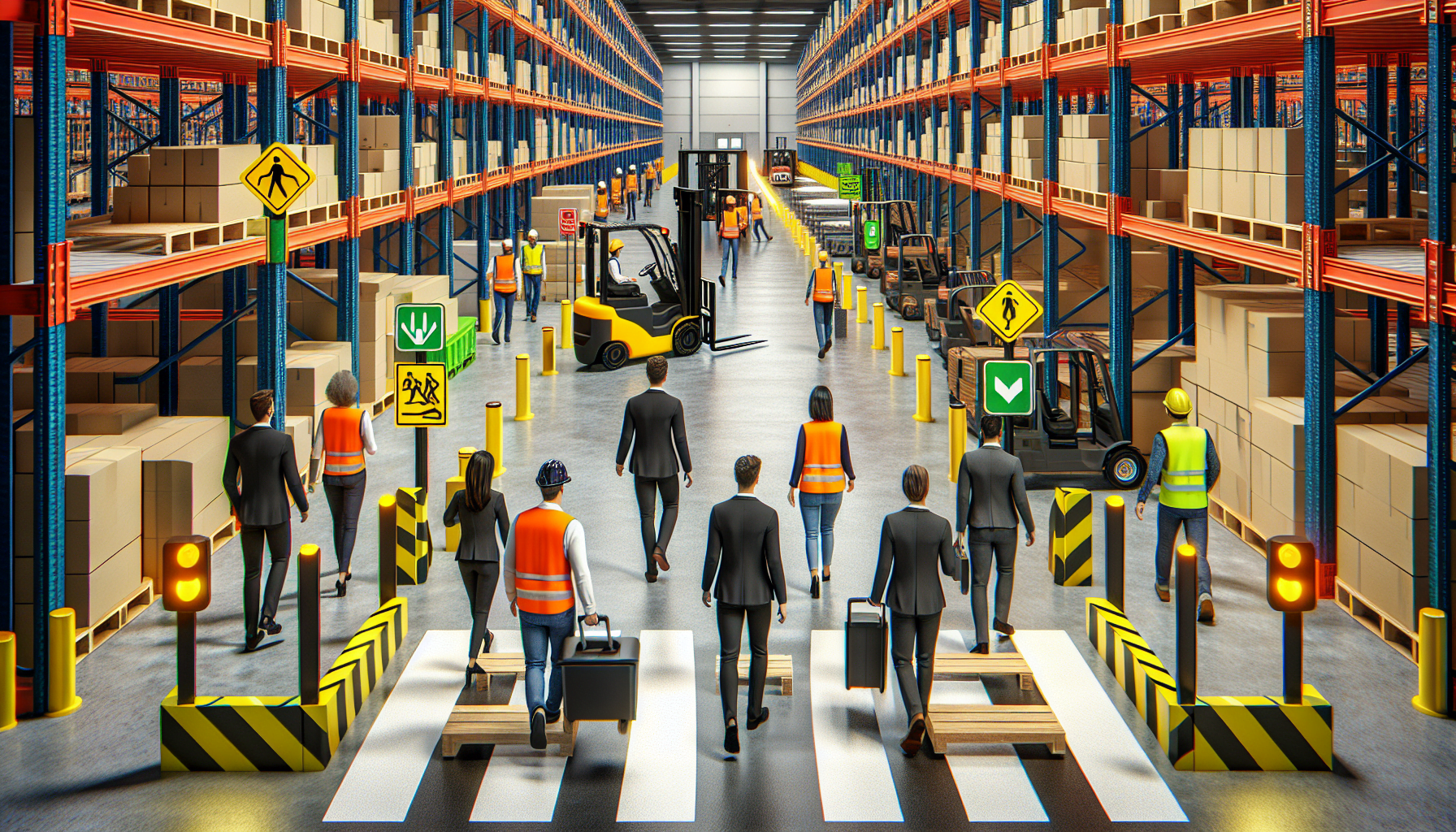Warehouse safety is of utmost importance to any business that relies on efficient and productive operations. With the presence of heavy machinery and constant movement of goods, it is crucial to prioritize the protection of warehouse pedestrians. One effective way to ensure their safety is by utilizing barriers and guardrails strategically throughout the warehouse.
The Importance of Protecting Warehouse Pedestrians
Before diving into the benefits of using barriers and guardrails, let’s first understand why protecting warehouse pedestrians is critical. Warehouses can be busy, bustling environments with forklifts, pallet jacks, and other equipment constantly in motion. This poses a significant risk to pedestrians who may be working alongside this machinery or simply passing through the warehouse.
The potential hazards for pedestrians in a warehouse include collisions with moving equipment, falling objects, slips and falls, and accidents caused by uneven surfaces. The consequences of these accidents can range from minor injuries to severe harm or even fatalities. By implementing protective measures, such as barriers and guardrails, businesses can significantly reduce the risk of such incidents and create a safer work environment for everyone involved.
The Role of Barriers and Guardrails in Warehouse Safety
Barriers and guardrails serve as physical barriers that separate pedestrians from potentially dangerous areas or equipment within the warehouse. Here are the key benefits of using these safety solutions:
- Accident Prevention: One of the main purposes of barriers and guardrails is to prevent accidents. By clearly defining pedestrian walkways and creating physical boundaries around restricted areas, employees are less likely to inadvertently enter hazardous zones.
- Workplace Organization: Implementing barriers and guardrails helps to organize the warehouse space and separate different work areas. This promotes efficient workflow, prevents clutter and congestion, and facilitates smoother operations.
- Injury Reduction: By providing a physical barrier between pedestrians and moving machinery, barriers and guardrails significantly reduce the possibility of collisions. They help prevent injuries caused by accidental contact with forklifts, pallet jacks, or other hazardous equipment.
- Visual Guidance: Well-placed barriers and guardrails can offer visual guidance to pedestrians, indicating safe pathways and areas to avoid. This helps in avoiding unintended deviations and keeping pedestrians on the designated walkways.
- Enhanced Safety Culture: When employees witness the implementation of safety measures like barriers and guardrails, it reinforces the importance of workplace safety. It promotes a safety-conscious mindset among the workforce and encourages adherence to safety protocols.
To enhance the safety of warehouse pedestrians even further, companies can opt for advanced technologies such as the Forklift Pedestrian Detection System provided by HCO Innovations. This system utilizes state-of-the-art sensors and intelligent algorithms to detect and alert both forklift operators and pedestrians of potential collisions. By integrating this system with the installation of barriers and guardrails, businesses can create a comprehensive safety network that prioritizes the well-being of all warehouse personnel.
Choosing the Right Barriers and Guardrails
When selecting barriers and guardrails for your warehouse, it is essential to consider a few key factors:
- Durability: The barriers and guardrails should be made of sturdy materials that can withstand the demands of a warehouse environment. They should be able to absorb and withstand impact to minimize damage.
- Customizability: Different areas within a warehouse may require different barrier configurations. Look for solutions that can be customized to fit the specific needs of your space.
- Visibility: Opt for barriers and guardrails that are highly visible, preferably with reflective properties. This enhances their effectiveness and ensures they are easily seen by both pedestrians and equipment operators.
- Maintenance: Consider the ease of maintenance when choosing barriers and guardrails. They should be easy to clean, repair, or replace if necessary to ensure continuous protection.
HCO Innovations offers a wide range of high-quality barriers and guardrails designed specifically for warehouse environments. With their expertise and experience, they can help you select the most suitable options for your warehouse, ensuring maximum safety and productivity.
In conclusion, protecting warehouse pedestrians should be a top priority for any business operating in a busy warehouse environment. By implementing barriers and guardrails strategically, companies can create a safer workplace, prevent accidents, and reduce the risk of injuries. Combined with advanced technologies like the Forklift Pedestrian Detection System provided by HCO Innovations, businesses can achieve the highest levels of warehouse safety. Invest in the right safety solutions today for a more secure and productive warehouse tomorrow.

